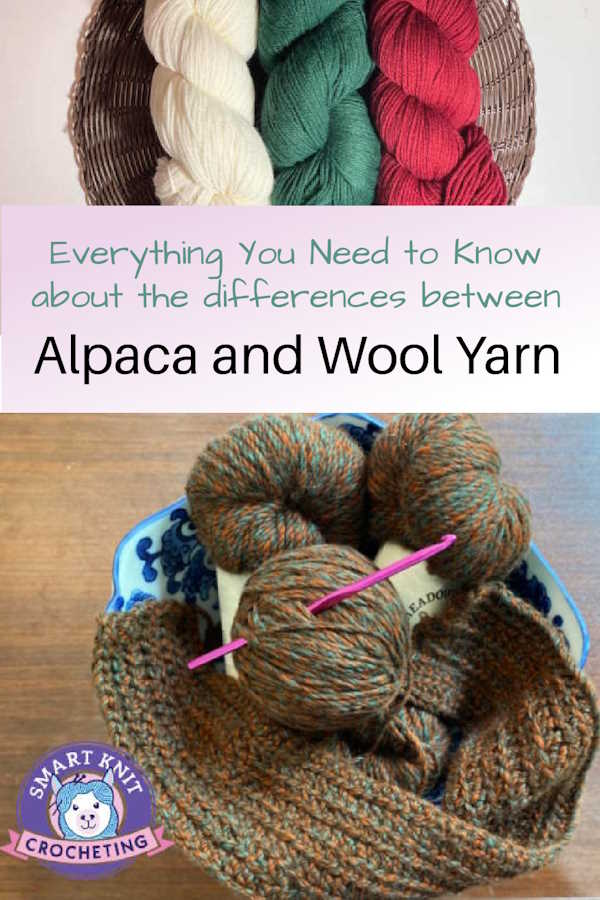- Home
- Differences Between Wool and Alpaca Yarns
A Comprehensive Guide to the Difference Between Wool and Alpaca Yarns
Difference Between Wool and Alpaca Yarns, by Janice Jones
For the avid knitter or crocheter, there are many yarns to choose from. Wool and Alpaca are the most popular and luxurious fibers, offering unique benefits.
But what is the difference between the two? When it comes to wool vs. alpaca yarn, it can be challenging to determine which is best for your project.
Wool has been used for centuries in clothing and accessories due to its warmth and strength, while Alpaca is a more modern, lighter, and softer yarn.
In this article, we'll explore the differences between wool and alpaca yarn, so you can make the best decision for your knitting or crocheting project.
Example of Wool Yarn
Example of Alpaca Yarn
Differences Between Wool and Alpaca Yarns
Before diving into the details of how each type of Yarn is made, let's take a quick look at the main differences between wool and alpaca yarn.
Both wool and Alpaca are fibrous animals, but wool is a hair made of sheep's or alpaca's keratin, while Alpaca is a fleece that's shed by the Alpaca as they grow.
The sheep are generally raised to produce wool, while the Alpaca is raised to produce their soft, white fiber.
Advantages of wool yarn
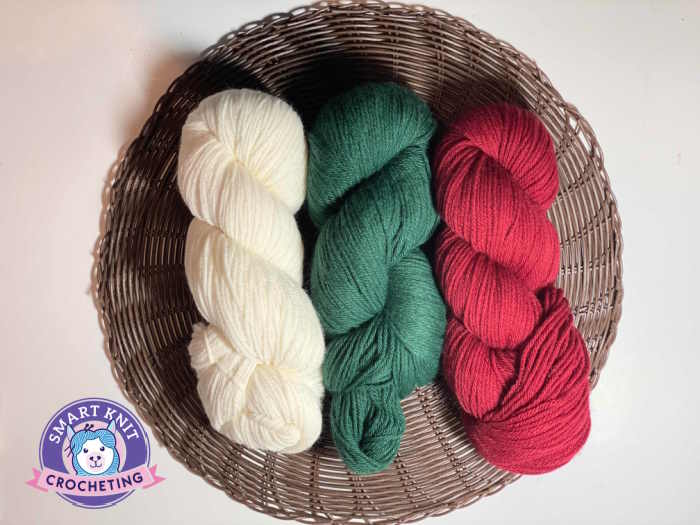
Wool mainly comes from sheep who are sheared once a year. Throughout the year, sheep are allowed to graze, drink fresh water, and bask in the sunlight, making wool that is a sustainable product.
But for the purposes of this article, I am including a discussion of yarns that come from goats and rabbits as well.
Wool is naturally warm and durable. Due to its strength and warmth, wool has been used in clothing and accessories for centuries. It is also one of the few natural fibers that can be dyed.
Other than felting, wool yarn does not absorb water, so it can be used for many projects that require washing, like sweaters and blankets. Wool is a renewable resource.
Every year, an estimated 50 million sheep produce more than half of the world's wool, with most of the wool produced in Australia. Because wool is a renewable resource, it is environmentally friendly.
Advantages of Wool Yarn
- 100% natural, renewable, and biodegradable
- Durability, resilience, and elastic
- Capacity to hold up to 30% of its weight in water without feeling damp or cold to the touch
- Wool helps keep you warm when it is cold and cool when it is hot
- Resists odors
- Easy to clean
- Hypoallergenic
- Fire resistant
- Long lifespan
Disadvantages of Wool Yarn
- Can be scratchy and irritate skin
- Can felt with water and agitation
- Wool is more expensive than synthetic yarns
- Garments made from wool need to be hand washed
- Some wools can absorb stains
- Wool is prone to damage by moths
Types of Wool Yarn
There are quite a few types of wool yarn, including the most popular. Please note that not all of the wool yarn listed below come from sheep, and goat breeds are also used for their hair/fur when creating Yarn.
Merino Wool Yarn
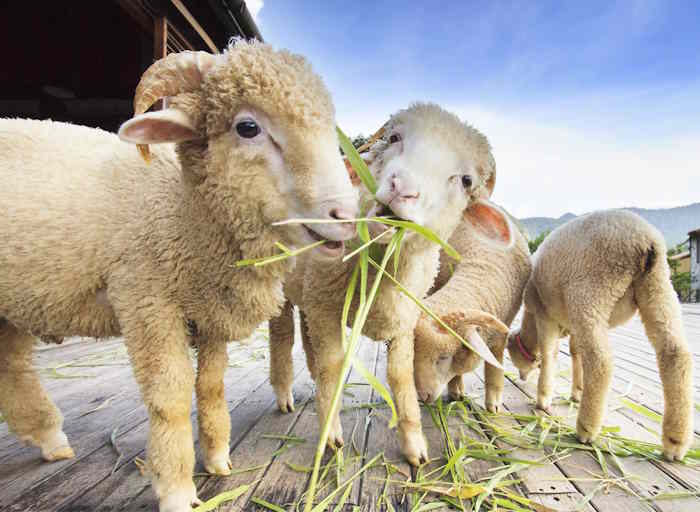
Merino wool is the king of all wool yarns. This robust fiber is considered to have the best combination of softness, strength, and elasticity of all the major types of wool yarn.
It is also the most versatile and common wool yarn used, making it an excellent choice for nearly every fiber art project.
The Merino sheep breeds produce a soft, strong fiber and possess excellent insulating properties. This makes it ideal for use in socks, gloves, and sweaters, which commonly require wool yarns that insulate against the cold.
The Merino sheep is a relatively new breed developed in the early 1900s, and it is a cross between a Spanish ewe and an Italian breed called the Montagna.
Shetland Wool Yarn
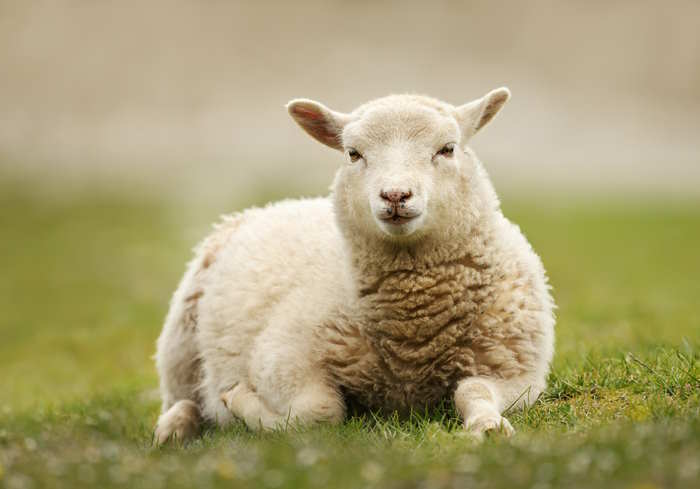
Shetland wool is one of the oldest types of wool yarn. This Yarn is produced by sheep found exclusively on the Shetland Islands of Scotland.
This wool type is deemed "silky" due to its soft texture and lustrous sheen. This Yarn is called "pure" Shetland wool because it is unspun combed wool.
The spinning process impurities give the Yarn its color, which is why Yarn produced with this type of wool is white. Shetland wool is a staple of knitting projects due to its soft, warm feel and ability to resist pilling.
This makes it an ideal choice for sweaters, socks, hats, and other projects that require a durable, soft, and warm yarn.
Mohair Wool Yarn
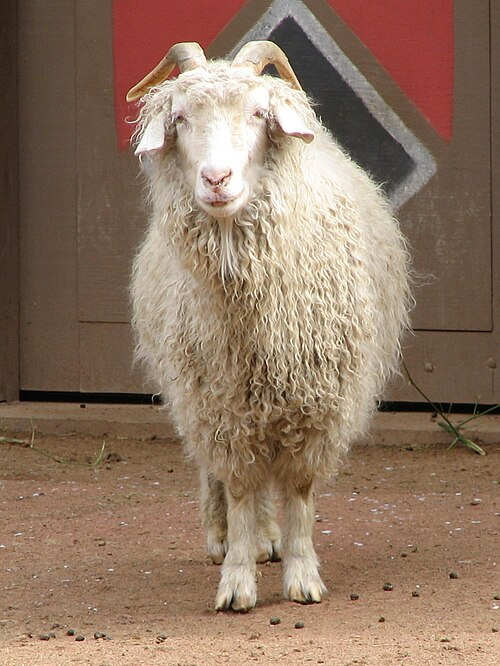
Mohair wool is produced from the locks of the African mohair goat (Angora Goat). This Yarn is considered one of the most luxurious types of wool yarn in the world, and it is also one of the most expensive due to its rarity.
Mohair wool is silky and soft to the touch, boasting excellent elasticity and a reputation for its exceptional warmth. Mohair yarn is also known for its ability to be worn multiple times without any noticeable decrease in warmth or softness.
This makes it ideal for sweaters, scarves, gloves, and other warm, soft, and durable projects.
Organic Wool Yarn
Organic wool yarn is grown and spun using organic practices. Most organic yarns are produced from Australian merino sheep breeds. If the wool is labeled as "certified organic," it indicates that the sheep are raised in accordance with US standards for organic livestock. This means that no synthetic pesticides have been used in the pastures or on the wool. This also means that sheep are not dipped in harsh insecticides to control parasites.
This type of wool is considered one of the most eco-friendly options. There are many benefits to using organic wool yarn, including the fact that it has no harmful residues, pesticides, or herbicides.
This makes it an ideal choice for green projects, such as scarves and blankets. Organic wool yarn is known for its softness, durability, and warmth. It also has a unique sheen, making it an excellent choice for home décor or clothing items.
This yarn is colorfast, allowing it to be used in the creation of various items.
Corriedale Wool Yarn
Corriedale wool is one of the most versatile types of wool yarn. This yarn is known for its strength and durability, making it an ideal choice for sweaters, socks, hats, and other items that require a robust yarn.
The wools comes from the Corriedale Sheep which is raised in most parts of the world for both meat and wool.
Corriedale wool is also known for its softness and warmth. It is not as soft as Merino wool yarns, but it is more delicate than many other wool types like Alpaca, making it an ideal choice for more durable items like scarves, hats, and gloves.
This is an excellent choice if you are looking for a versatile wool yarn that can be used for various projects.
Cashmere Wool Yarn
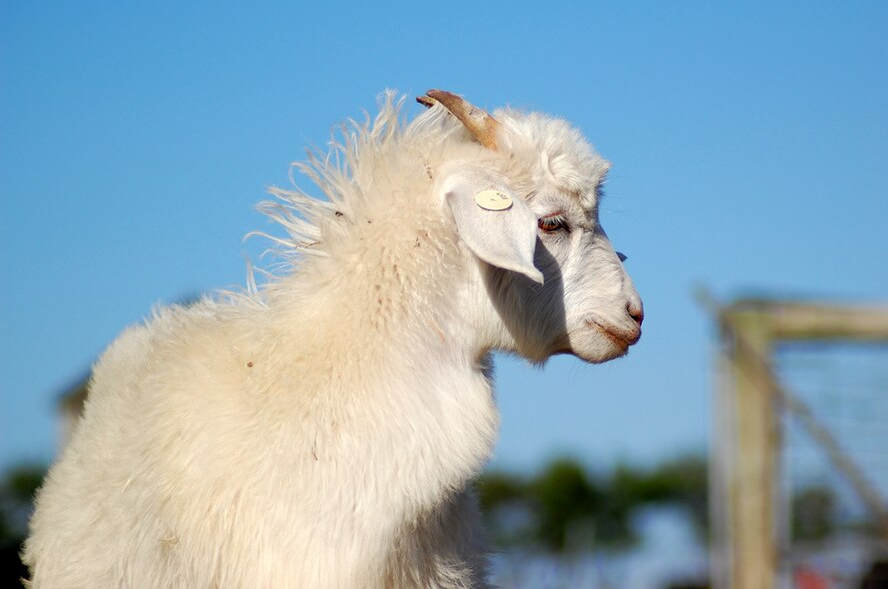 Paul Esson from Bacchus Marsh, Australia, CC BY-SA 2.0
Paul Esson from Bacchus Marsh, Australia, CC BY-SA 2.0 Cashmere is a type of wool that comes from Himalayan goats. This Yarn is known for its extreme softness, is even softer than Merino wool, and is considered the world's most expensive type of wool yarn.
Cashmere yarn is also known for its warmth and breathability, making it an ideal yarn for use in hats, gloves, socks, blankets, and other items that require a soft, warm, and breathable material.
This yarn is also highly sought after due to its ability to be felted and reshaped, and you can even dye it in various colors.
What Projects Work Best with Wool Yarn?
Wool yarn is excellent if you want your project to be warm and durable. This includes sweaters, scarves, hats, gloves, socks, blankets, and anything else that can be made from wool felt.
Wool is naturally water-resistant, so it can be used for outdoor projects like jackets, hats, blankets, and tents. Wool can also be used for many other projects, depending on what you want.
It is a versatile yarn that can be used for both clothing and accessories. For knitted items, wool is popular due to its warmth and durability. It is also ideal for winter projects, as it can withstand being worn and washed without losing its softness.
Silky wool is also a great yarn for blankets and scarves, as it allows the yarn to be easily pulled through your hands without catching. Vertical yarns like cashmere, mohair, or angora are also made from wool.
These yarns are especially useful for accessories like hats, scarves, and gloves. Natural wool is a great choice for felted projects. It has a variety of colors and textures, making it easy to find a suitable wool for your project.
Benefits of Alpaca Yarn
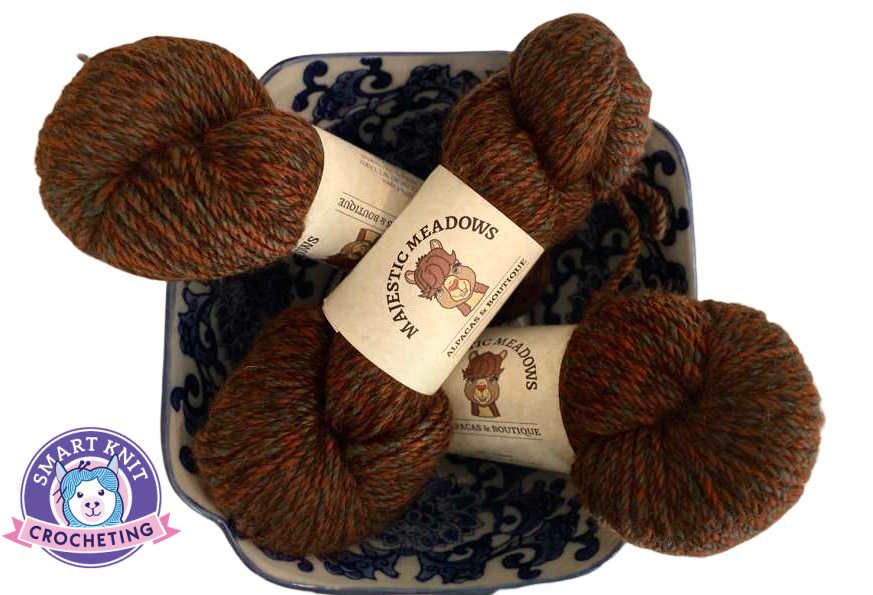
According to Cotton Creek Farms, Alpaca yarn has many advantages:
- Alpaca Fleece is 30% warmer
- Alpaca fleece is generally stronger, lighter, and more resilient than wool
- It is hypoallergenic
- It is odor resistant
- There are 22 natural alpaca colors; it can easily be dyed in other colors
- It is naturally water resistant
- It is flame resistant
- It looks and feels fantastic
- It is natural and biodegradable
What are the Disadvantages of Alpaca Yarn
- Expensive and often comes as a blend
- Can be itchy to some folks with sensitivities
- Sensitive to moths - as is wool
- Not vegan
- Not often available in hobby stores - purchase locally or online
- Long distance shipping is not good for the environment - buy locally
Baby Alpaca Yarn
Baby alpaca yarn is produced from the underside of the neck, where the hair is fine and soft. Only the fiber clipped from one-year-old alpacas can be called baby alpaca.
Because alpaca fiber is so soft, it is ideal for creating baby clothing, blankets, and blankets that can be used for cuddling. Baby alpaca yarn comes in various colors, making it an excellent choice for creating beautifully designed baby garments, socks, and mittens or crafting a personalized toy for your child.
Baby alpaca yarn has a soft and silky texture, making it ideal for use in projects that are meant to be worn or touched by a small person, such as blankets, scarves, and pajamas.
Although baby alpaca yarn is a good option for creating items for a child, the Yarn is not durable enough for more active uses, such as blankets and play items that will be frequently handled since it is prone to snags and pulls.
Royal Alpaca Yarn
Royal alpaca yarn is produced from luxurious and softest fibers meant to be worked for clothing. Also called super baby alpaca, it is located on the back of the alpaca.
It can be dyed with natural dyes, making it an excellent choice for creating garments, accessories, and home decor items that will look elegant and rich in color. It is considered a premium yarn and the most expensive alpaca yarns.
Superfine Alpaca Yarn
Superfine alpaca yarn is produced from alpaca fiber and is dyed with chemical dyes, making it a great choice for creating garments, accessories, and home decor items that feature a bright, vivid color palette.
Superfine alpaca yarn has a soft and silky texture, making it ideal for creating scarves, blankets, blankets, and sweaters worn as outerwear.
Superfine alpaca yarn comes in a wide variety of colors, making it an excellent choice for creating garments, like dresses, blouses, and scarves, that can be worn to a variety of social occasions, like weddings, birthday parties, and holiday celebrations, where guests will be able to easily compliment your look with compliments.
The Yarn is a durable and machine-washable fiber that can be used in various applications, such as blankets, sweaters, and hats, that will be handled frequently, like blankets, hats, scarves, and sweaters.
Check the yarn ball for the appropriate needle or hook sizes.
Huacaya Alpaca Yarn
Huacaya alpaca yarn is a type of alpaca fiber that has crimpy waves and grows in bundles, It can be dyed with natural dyes, making it a great choice for creating garments, accessories, and home decor items that feature a vibrant color palette.
It comes from the Alpaca breed called Huacaya which is originally from Peru.
The yarn is a durable and machine-washable fiber used in various applications, such as blankets, sweaters, and hats, that will be handled frequently, like blankets, hats, scarves, and sweaters.
Suri Alpaca Yarn

This lace yarn is another type of alpaca fiber that is straight and grows in locks. This alpaca breed produces exceptionally soft and airy fibers so that all knitting projects made with SURI are light and fluffy and feel like silk.
It can be dyed with natural dyes, making it a great choice for creating garments, accessories, and home decor items that feature a vibrant color palette.
Suri alpaca is one of two breeds of the alpaca used to make yarn.
Mohair Alpaca Yarn
Mohair alpaca yarn is produced from a blend of alpaca fiber and mohair and is dyed with natural dyes, making it a great choice for creating garments, accessories, and home décor items that feature a vibrant color palette.
The yarn ball will specify what percentage of mohair and alpaca is contained in the Yarn. It is soft and silky like alpaca fiber but comes in a coarser, more tightly spun yarn.
Mohair alpaca yarn is available in various colors and is excellent for creating blankets, throws, blankets, and sweaters, which are intended to be used as a warm covering for the body.
The yarn is a durable and machine-washable fiber that can be used in various applications, such as blankets, throws, and hats, that will be handled frequently, like blankets, throws, and hats.
Wool vs. Alpaca Yarn: Which one should you choose?
If you're looking for a natural fiber that is durable, warm, and soft, wool is a perfect choice. It has been used for centuries, making it a dependable natural fiber.
Alpaca is the best choice if you're looking for a lightweight, soft, and environmentally friendly luxury yarn. It comes from alpacas and is more environmentally friendly than cashmere or angora, and Alpaca is also more affordable than cashmere and angora.
But wool from sheep is more affordable than alpaca, especially in the US, because the production of wool from sheep is greater than alpaca.
Many people feel that alpaca is less itchy than wool. If you are allergic to wool, you may be able to tolerate alpaca yarn.
Although wool and Alpaca produce soft and luxurious Yarn, they have different advantages regarding projects. If you're looking for a warm yarn that is durable, soft, and water-resistant, wool is the best choice. If you're looking for a soft and lightweight yarn that is more affordable, Alpaca is the best choice.
Difference Between Wool and Alpaca Yarns, Last Words
If you are new to knitting or crocheting, you are likely buying much of your yarn from local big box craft stores, so the type of yarn you see is likely limited to synthetics such as acrylic, cotton and cotton blends, wool blends and perhaps alpaca blends.
There are a few 100% wool yarns available in these craft stores, but it’s unlikely that you will find a wide selection of wools and as of this writing, I have never encountered a 100% alpaca yarn. Please correct me if I’m wrong.
If you want to move away from your comfort level, you may need to find a local yarn shop that stock more expensive yarns or find sources online.


